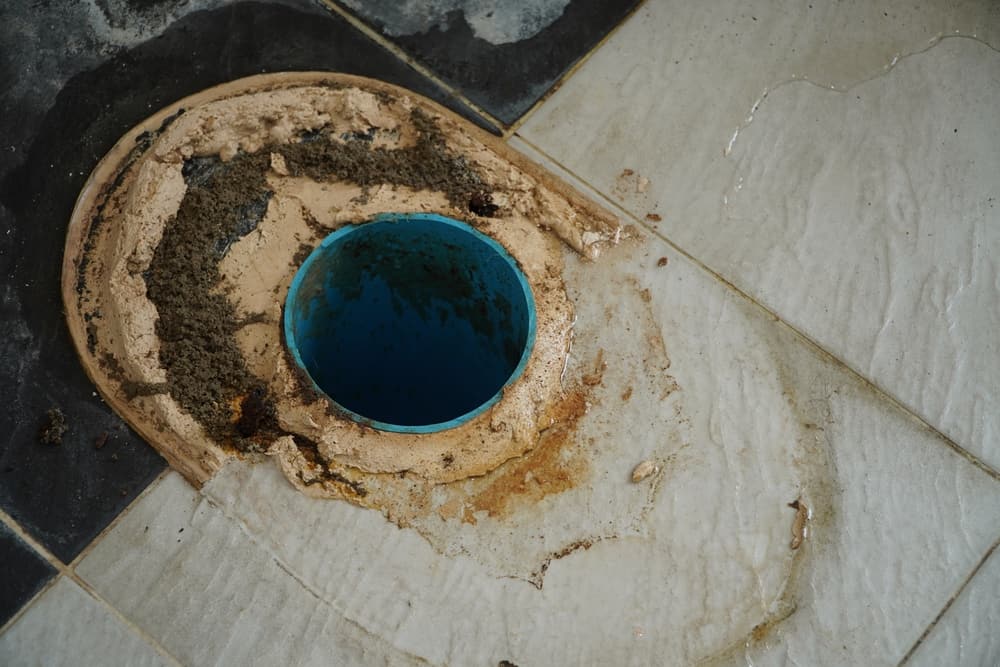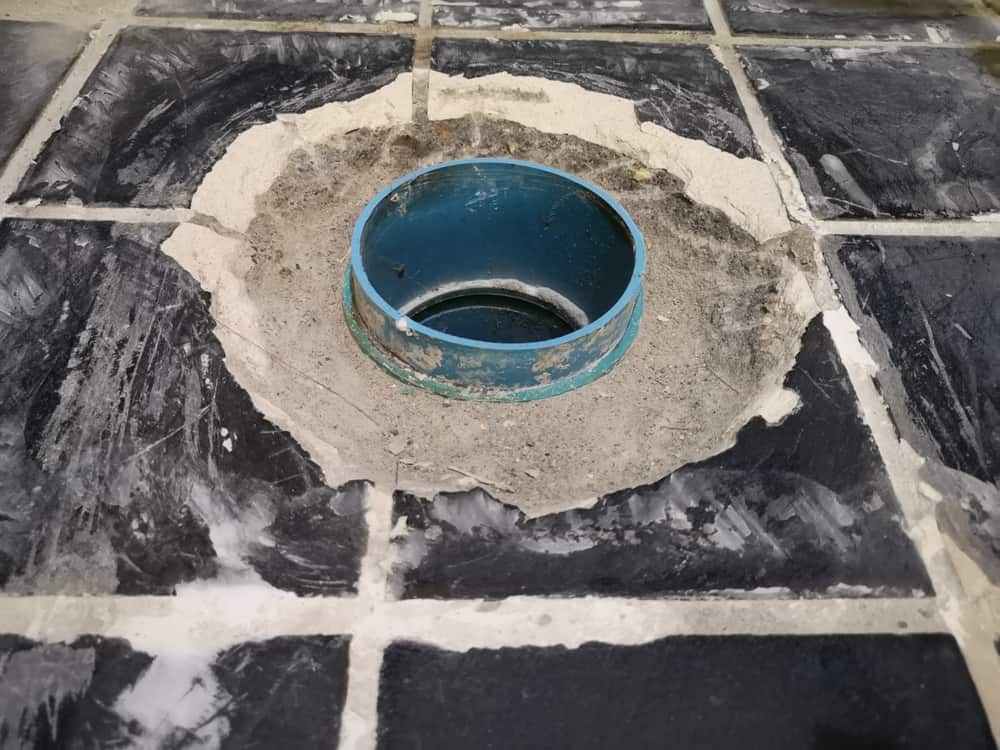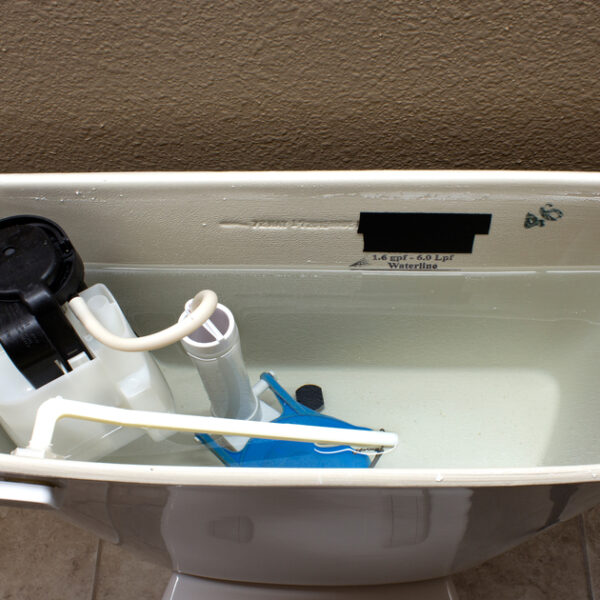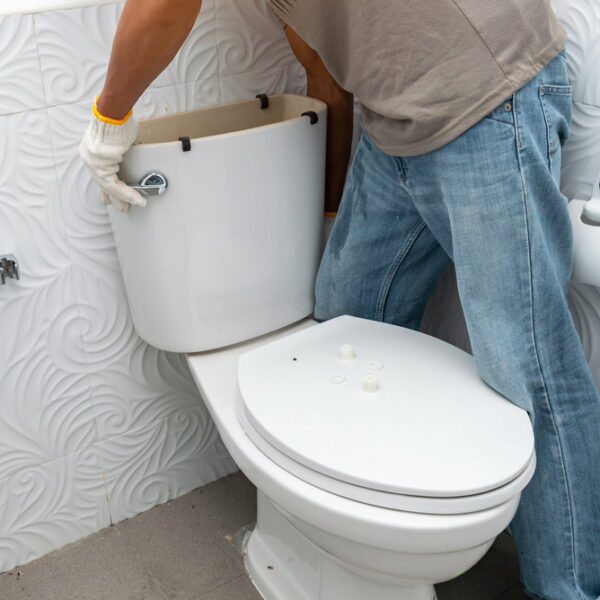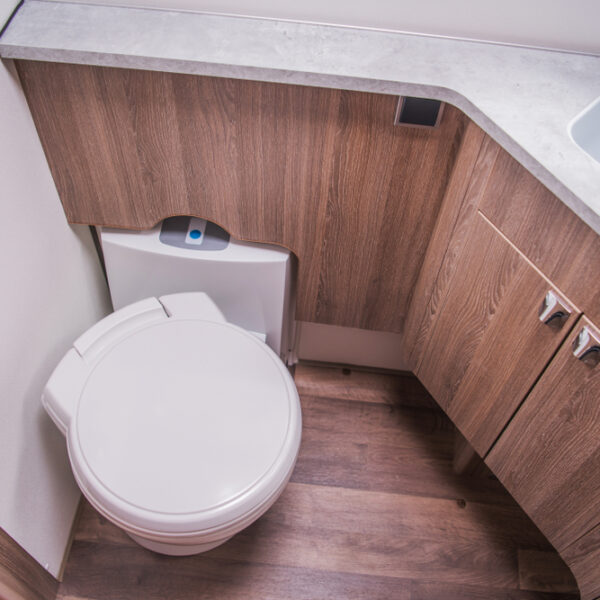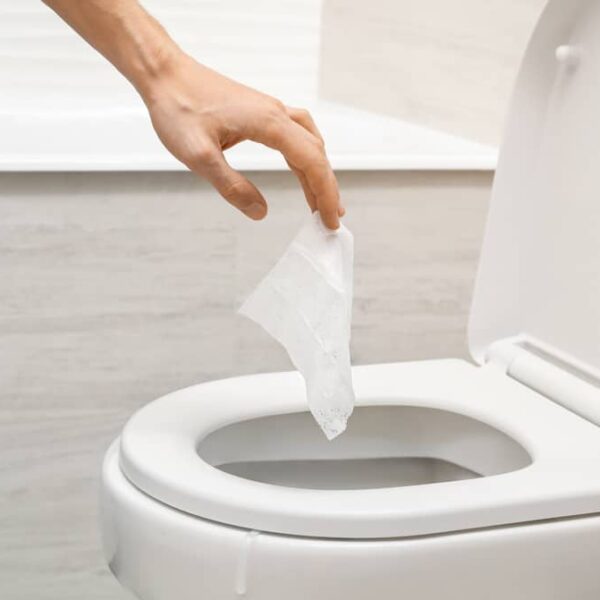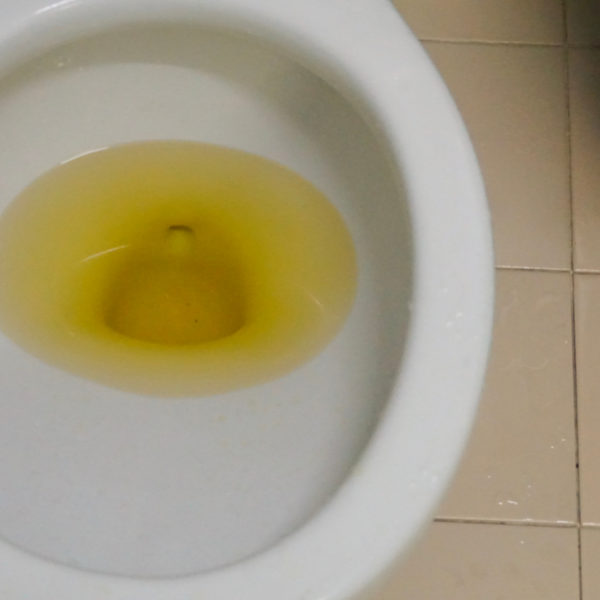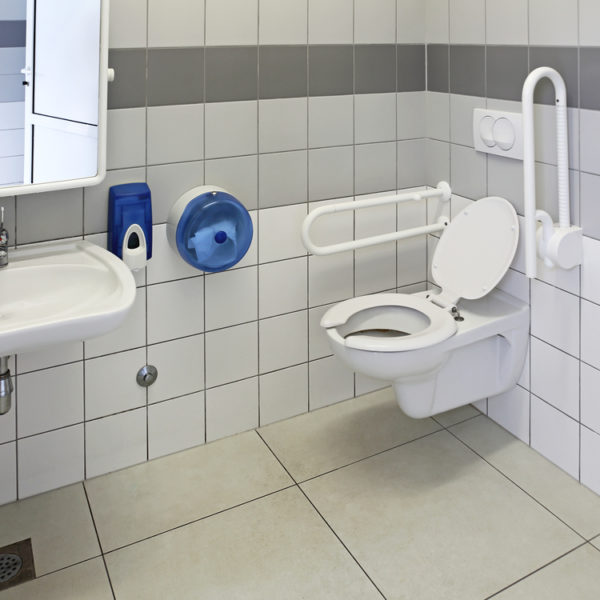Toilet installation is not usually such a difficult job, and it’s one most competent DIYers can handle by themselves. However, there are several problems that may arise during the installation process, and discovering that the toilet flange is too low is a common one.
The good news, though, is that when it occurs, this is not such a tricky problem to solve – so in this post, we discuss the issue of when a toilet flange is too low as well as why it happens and what you can do about it.
What is a toilet flange?
Let’s start with the basics – what is a toilet flange?
A toilet flange, also known as a closet flange, is a type of pipe fitting that is used to connect the toilet to the drainage system and fix the toilet to the floor.
The connection creates an airtight seal, which is important because it prevents water and sewer gas from leaking out of the toilet.
A wax ring is used to create the watertight seal with the horn of the toilet, preventing leaks and keeping all unpleasant odors inside.
The toilet flange itself is attached to the subfloor with rustproof nails, and the toilet is then bolted in place on top.
Toilet flanges can be made of a range of different materials, including PVC, ABS, cast iron, brass or others.
What is the reason for the toilet flange being too low?
The most common cause for a toilet flange being too low occurs when a floor is replaced.
With an existing floor, the surface should have been the right height for the flange, allowing a perfect installation. However, if a new tile floor or other material is laid over the old floor, it will raise the height of the floor, leaving the flange below the surface of the new floor.
Alternatively, even if you remove the old floor surface before installing the new one, the same issue can arise if the new flooring material is thicker than what was in place before.
Another common issue is that when a new house is built, the plumbing is installed before the surface of the floor is laid.
This means that unless the plumber who installed the toilet when the floor surface was laid took this into account, the surface of the finished floor will be above the level of the flange, creating the same problem.
Finally, problems can also arise from old, worn-out wax rings.
As we will see in a moment, one way to rectify the issue of a low floor flange is to use a single thicker wax ring or two stacked wax rings. However, this is not a long-term fix since wax rings will eventually wear out with time, causing the problem of the low flange to return.
How can you tell if your toilet flange is too low?
If you are fitting a new toilet or are putting your old toilet back in place after laying a new floor surface in your bathroom, you will be able to see visually that the flange is too low since it will sit below the surface of the floor.
The ideal height for a toilet flange is about ¼” above or below the floor surface, but depending on the height of your new floor, the top of the flange may be significantly further below the top of the finished floor surface, something that will be obvious just from looking at it.
A toilet flange that is slightly below the level of the floor is fine, but if it’s more than ¼” below the level, it can cause problems when you try to install your toilet. If this is the case, you risk the toilet leaking or sewer gases escaping after it has been installed.
If, on the other hand, the problem arises through a worn-out wax ring, you won’t be able to see the flange because the toilet will still be in place over it. However, you may notice leaks coming from under your toilet or unpleasant odors escaping from underneath your toilet.
If this happens, it’s a good indication that there’s a problem with the flange being too low, and you’ll need to remove the toilet to check it out.
What can you do if your toilet flange is too low?
Having a toilet flange that is too low is a common problem – it’s estimated that due to the way plumbing is installed in new houses, this issue occurs in up to 90% of new homes in the US.
However, it’s also a relatively simple problem to rectify, either with quick, inexpensive fixes or with more long-term solutions. So now let’s have a look at two common options.
Method 1: Wax rings
As we just mentioned, using thicker or stacked wax rings is a quick, short-term fix for a flange that’s too low. It won’t last forever, and eventually, you’ll have to go back and replace the wax rings – or try something that will last a bit longer.
However, the advantages are that it hardly costs anything and that people with even moderate DIY skills will be able to do it without help.
When any toilet is fitted, a watertight and airtight wax seal is created where the flange meets the toilet horn using a wax ring. As the name suggests, this is a ring that’s usually made of wax, although modern versions can also be made of rubber.
If the toilet flange isn’t too much lower than the floor surface, you may be able to just use a single, thicker wax ring to resolve the issue. However, if the flange is significantly below the surface of the floor, you will need to use two wax rings stacked on top of one other.
What you’ll need:
- Old cup
- Old towel or rag
- Wrench
- Putty knife
- Hammer and chisel
- Thick wax ring or two wax rings
How to do it:
- Turn off water and empty the toilet tank and bowl
Start by turning off the water supply to the toilet. Flush the toilet to remove all the water from the tank and then remove the water from the bowl. The easiest way to do this is to scoop the water out with an old cup and then remove what’s left with an old towel or rag.
- Unbolt the toilet and remove it
Next, unscrew the nuts that are holding the toilet in place with a wrench and then lift the toilet away from where it sits. You may have to chip away the caulking from around the bottom with a knife or with a hammer and chisel.
If you use a hammer and chisel, be careful not to damage the porcelain of your toilet.
- Scrape off the old wax ring
Parts of the old wax ring will probably be stuck to the toilet and the existing flange, so using a putty knife, scrape it off before fitting the new one.
- Fit the new wax ring or rings and reattach the toilet
Put one thick wax ring or, as necessary, two stacked rings over the toilet flange, and once this is done, if everything looks good, you can go ahead and reattach the toilet.
Bolt the toilet in place, turn the water back on and flush the toilet to test. You should find that no water leaks from under the toilet, in which case you’ve successfully resolved the problem.
Method 2: Toiler flange extender kit
A toilet flange extender kit is a simple piece of equipment that fits over the toilet flange to raise it to the correct height, allowing you to connect your toilet to the flange and drainpipe properly.
Many extenders are no more than simple rings, usually made of plastic, that come in various different thicknesses depending on how much you need to extend your toilet flange.
Another type looks like a toilet flange but has a narrower pipe that fits into the old flange, and some come with several spacer rings, which allows you to raise the level of the flange to exactly the height you need.
Most also come with a rubber gasket that is used to create a watertight seal, but some kits may require you to apply caulk for this purpose.
Fitting an extender is a longer-term solution than simply using a thicker ring or stacked wax rings, and once in place, you shouldn’t need to go back and replace the installation for many years – if ever.
Although different extenders may work slightly differently, here’s a general guide to fitting one.
What you’ll need:
- Old cup
- Old towel or rag
- Putty knife
- Wrench
- Hammer and chisel
- Flange extender kit
- Silicone caulk (if extender kit doesn’t come with a rubber gasket)
- Rustproof screws (if not included in the kit)
- Screwdriver
- New wax ring
How to do it:
- Turn off the water, empty the tank and toilet bowl
Start by turning off the water and emptying both the tank and the toilet bowl as described above.
- Remove the toilet
As described above, unbolt the toilet and remove it from the wall. Again, be careful not to damage the porcelain as you do this.
- Scrape off the old wax ring
The old wax ring will most likely be stuck to the toilet, the flange or both. This means before you move to the next step, you’ll need to scrape it all off using a putty knife.
- Put the extender in place to check the height
Place the flange extender over the existing flange to see if it raises the top to the desired height. If you have spacer rings, you can also experiment with them to see how many of them you need to achieve the ideal height.
- Remove existing screws from flange
Next, remove all the screws from the existing flange. You need to do this because you are going to use the same holes to screw the extender in place.
- Create the watertight seal either with a rubber gasket or with silicone caulk
If the extender you are using came with a rubber gasket to create the seal, follow the instructions that came with it for fitting it in place.
If not, you should apply silicone caulk to the underside of the extender to create the seal between the extender and the existing flange.
- Line up the holes and screw the extender in place
Line up the holes on the extender with the holes in the existing flange and use rustproof screws to attach both to the floor.
- Replace the toilet and test
Fit the toilet back in place using a new wax ring and then bolt the toilet to the bathroom floor. Turn the water back on and flush the toilet to test. If there is no flooding from under the toilet, the operation has been successful.
What about if the toilet flange is too high?
A related problem to a flange that is too low is one that’s too high. This may happen if you install a new floor surface that is not as thick as the old one – or it could be due to faulty installation by your plumber.
Alternatively, you could also have a similar issue if the wax ring is too thick.
A flange that’s too high may cause your toilet to rock, and it may also result in water leaks or sewer gas escaping.
You can avoid this problem by paying attention to how high the floor is compared to the bottom of the toilet when before you lay the new floor.
If you see that the floor is not going to be as thick as before, you can take pre-emptive action by placing a layer of underlay beneath the floor to raise its height.
However, if you don’t notice the problem until the entire floor has been laid, the simplest way to fix it is to apply grout around the base of the toilet to prevent it from rocking.
Finally, one other solution is simply to trim the waste pipe to lower the level of the flange.
Final tip: Take thickness into account when laying a new floor
As a final piece of advice, whenever you lay a new floor in your bathroom, you should take the thickness of the new floor into account to avoid problems with the toilet flange being too high or too low.
If you are laying the new floor directly over the old one, the height of the floor will increase by the total thickness of the new surface.
However, if you are taking up the old floor and replacing it with a new one, you should check the difference between the two to see if you are likely to encounter any flange-related problems.
A common problem that’s not too hard to rectify
As we have mentioned, problems with toilet flanges being too low or too high are not uncommon, and thankfully, you have several options to try that will rectify the issue.
If your flange is too low, the easiest and cheapest method is simply to use a thicker wax ring or stacked rings. Alternatively, you can use an extender, which is a longer-term solution that will mean you won’t need to think about the issue again for a long time to come.
